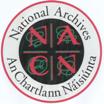Ireland, Catholic Qualification & Convert Rolls 1701-1845
During the harsh Penal Laws of the 18th century, Irish Catholics were restricted from owning property or having businesses. Many chose to either convert (at least legally) to the Church of Ireland or swear loyalty to the Crown in front of a court so that they might qualify for certain rights. Find out if your ancestors were among those who converted or pledged loyalty in the Catholic qualification and convert rolls between 1701 and 1845.
See description
During the harsh Penal Laws of the 18th century, Irish Catholics were restricted from owning property or having businesses. Many chose to either convert (at least legally) to the Church of Ireland or swear loyalty to the Crown in front of a court so that they might qualify for certain rights. Find out if your ancestors were among those who converted or pledged loyalty in the Catholic qualification and convert rolls between 1701 and 1845.
Learn about these records
During the harsh Penal Laws of the 18th century, Irish Catholics were restricted from owning property or having businesses. Many chose to either convert (at least legally) to the Church of Ireland or swear loyalty to the Crown in front of a court so that they might qualify for certain rights. Find out if your ancestors were among those who converted or pledged loyalty in the Catholic qualification and convert rolls between 1701 and 1845. These are rare 18th-century Irish records that also include the names of many who can come to Ireland from other European countries and naturalised.
Each record contains a transcript and an image of the original entry. The amount of information can vary as there are different kinds of records included in this collection, but you should find out the following about your ancestor:
-
Name
-
Address (usually found on the image)
-
Occupation
-
Date of conversion or qualification
-
Date of enrolment or court hearing
-
Court
Under the Penal laws, Catholics and Protestant dissenters in Ireland were deemed to be treasonous by default. Catholics were not allowed to hold public office, intermarry with anyone from the Church of Ireland, hold firearms, serve in the armed forces, inherit property, study abroad, vote, or become members of Parliament or the legal profession.
Under these conditions, those who had most to lose, mainly the middle classes and Catholic aristocracy, considered taking drastic action. By swearing an oath before a court pledging allegiance to the British Crown, certain privileges could be retained. However, many chose the drastic action of converting to the established religion, at least in name, thus qualifying them for full rights under the law.
Conversion to the established church also had to be sworn in a court of law, which means that in both the qualification and convert rolls you will find people listed by the court they appeared before. The courts listed are generally the local county town Assizes, although conversions then had to be lodged in Chancery. The procedure for conversion was to renounce Catholicism in front of a clergyman and congregation in open service. The convert would then receive a certificate from the diocesan bishop, which was then enrolled in Chancery. Before 1782, the diocesan bishop’s certificate was mandatory, however, following 1782, conversion was deemed complete as long as the individual converting received the sacrament from a minister of the Church of Ireland, took the oath before said minister, and filed a certificate to that effect in Chancery.
The convert rolls themselves were destroyed in the Four Courts fire of 1922, but luckily, they had been calendared and recorded elsewhere. The calendars are in two volumes: volume 1 covers the years 1789 to 1838 and volume 2 from 1800 to 1838. Most people enrolled in Dublin.
While most of the converts were men, there are about 1,500 women named in the rolls. You will also find names that are not of Irish origin as naturalised citizens were likewise subject to the Penal Laws. In fact, the names of naturalised Irish citizens take up the majority of the later records that occurred after the Catholic emancipation, which removed the restrictions on Irish Catholics.
The qualification rolls make up the majority of the records and arose as a result of the various Catholic Relief Acts from 1778, which lifted many of the Penal Laws around land ownership. But to avail themselves of these new rights, Catholics and Dissenters had to appear before a court and swear allegiance to the British monarch. So just like conversions, these oaths were sworn in front of a judge of one of the various courts (usually Assize), following which such petitioners were judged to have qualified to avail themselves of these rights.
Search tips
If you are having trouble locating your ancestor in these records, try searching by name variants or abbreviations. Your ancestor's first name may not have been recorded in full or at all. Try searching by last name only to ensure you are not missing relevant results.
